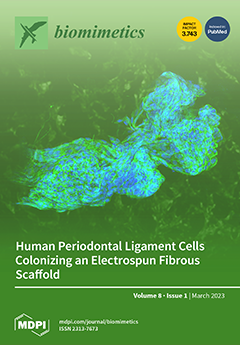Open AccessArticle
Comparative Analysis of Mechanical Properties and Microbiological Resistance of Polyfilament and Monofilament Suture Materials Used in the Operation “Tooth Extraction”
by
Alexey A. Pcheliakov, Ekaterina Yu. Diachkova, Yuriy L. Vasil’ev, Oxana A. Svitich, Alexander V. Poddubikov, Stanislav A. Evlashin, Beatrice A. Volel, Anastasia A. Bakhmet, Svetlana V. Klochkova, Ellina V. Velichko, Natalia Tiunova and Svetlana V. Tarasenko
Cited by 1 | Viewed by 2034
Abstract
In surgical dentistry, suture material is the only foreign body that remains in the tissues after surgery, and it can lead to several negative reactions, for example, infection of the wound. The purpose of this study was to compare the mechanical properties and
[...] Read more.
In surgical dentistry, suture material is the only foreign body that remains in the tissues after surgery, and it can lead to several negative reactions, for example, infection of the wound. The purpose of this study was to compare the mechanical properties and microbiological resistance of mono- and polyfilament suture materials used in tooth extraction operations. The study of elongation and knot force was carried out on an Instron 5969 Dual Column Testing System device. The capillarity of the materials was studied on a setup assembled by the authors manually by immersing the ends of the filaments in a colored manganese solution. A microbiological study was carried out on the threads taken for the experiment immediately after wound suturing, and on day 7, at which time they were removed. The comparison was made according to Rothia mucilaginosa, Streptococcus sanguinis, Staphylococcus epidermidis. Results: monofilament suture materials (Prolene and Glycolon), after calculating the Kruskal–Wallis and Mann–Whitney indices, showed better performance in all experiments compared to polyfilament sutures (Vicryl and PGA). In capillarity comparison, there was a significant difference between groups (
p = 0.00018). According to the sum of the results of three microbiological studies on day 7, monofilament suture materials absorbed less of the studied bacteria on their surface compared to the polyfilament ones (
p < 0.05). Conclusions: Of the studied suture materials, Prolene had the best microbiological resistance and good mechanical properties.
Full article
►▼
Show Figures






